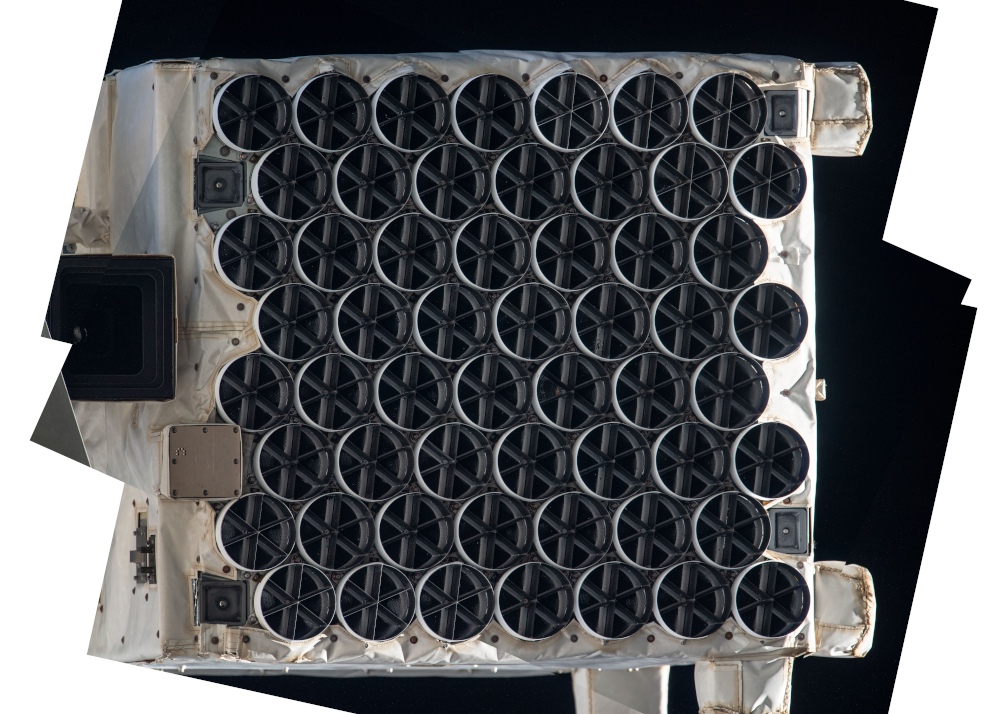NICER / ISS Science Nugget
for August 3, 2023
Investigating and mitigating NICER data degradation during orbit day
On May 22, 2023, NICER developed a visible-light leak into the X-ray Timing Instrument (XTI) optical bench. This was made apparent by a high rate of "undershoot" detector resets while NICER was on the day side of the ISS orbit. The undershoot rate is proportional to the rate of charge build-up on the detectors, which is dominated by optical light loading. Orbit-night data quality is unchanged, and X-ray spectra from targets acquired in orbit night are consistent with those obtained before May 22. During orbit day, depending on conditions such as Sun angle and bright-Earth elevation, the detectors running with standard thresholds experience strong noise in the low-energy X-ray band. The large count rates from this noise and resets can lead to detectors switching off, telemetry saturation, and spurious timing features. Operational mitigations have been put in place to recover some daytime data quality.
Imagery obtained by external ISS cameras of the XTI's front surface confirmed our initial suspicions that one or more punctures or tears had developed in the thin windows that allow cosmic X-ray photons to reach the NICER optics and detectors but that are designed to be largely opaque to visible and infrared light. A more thorough, high-resolution photographic survey was performed by ISS crew on July 31, further informing the NICER team's understanding of the extent of damage to these thin films, which appears to be confined to a handful of the 56 optic-plus-sunshade assemblies, and typically in just one segment (1/6th) of the full window. Additional analysis was performed with observations of the bright star Vega during orbit-night. The limited extent of the damage suggested, at least in principle, the possibility of a repair effort to patch the light leaks and recover over 98% of NICER's original science data-collection capability. With support from the Science Mission Directorate's Astrophysics Division at NASA HQ, the NICER team last week presented a repair concept to the ISS Research Integration Control Board (RICB), and received approval to assess the feasibility of this concept through detailed technical discussions with both the extravehicular activity (EVA) and extravehicular robotics (EVR) offices.
The NICER Team would like to express its deep gratitude to all elements of the ISS research-enabling program at JSC and MSFC, the RICB, and Station crew, for their unwavering support.

Composite of multiple photographs obtained by Expedition 69 crewmember Sultan AlNeyadi from the MRM2 starboard window on July 31, as NICER was pointed toward the window for the photo survey. The 56 sunshades (circles with six "pie wedges" defined by radial vanes) on NICER's front surface dominate the image. The photographs provide the NICER team with insight into which optical-blocking filters have been damaged during 6-plus years on-orbit. (Composite credit: C. Markwardt)
<< Previous
Main Index
Next >>